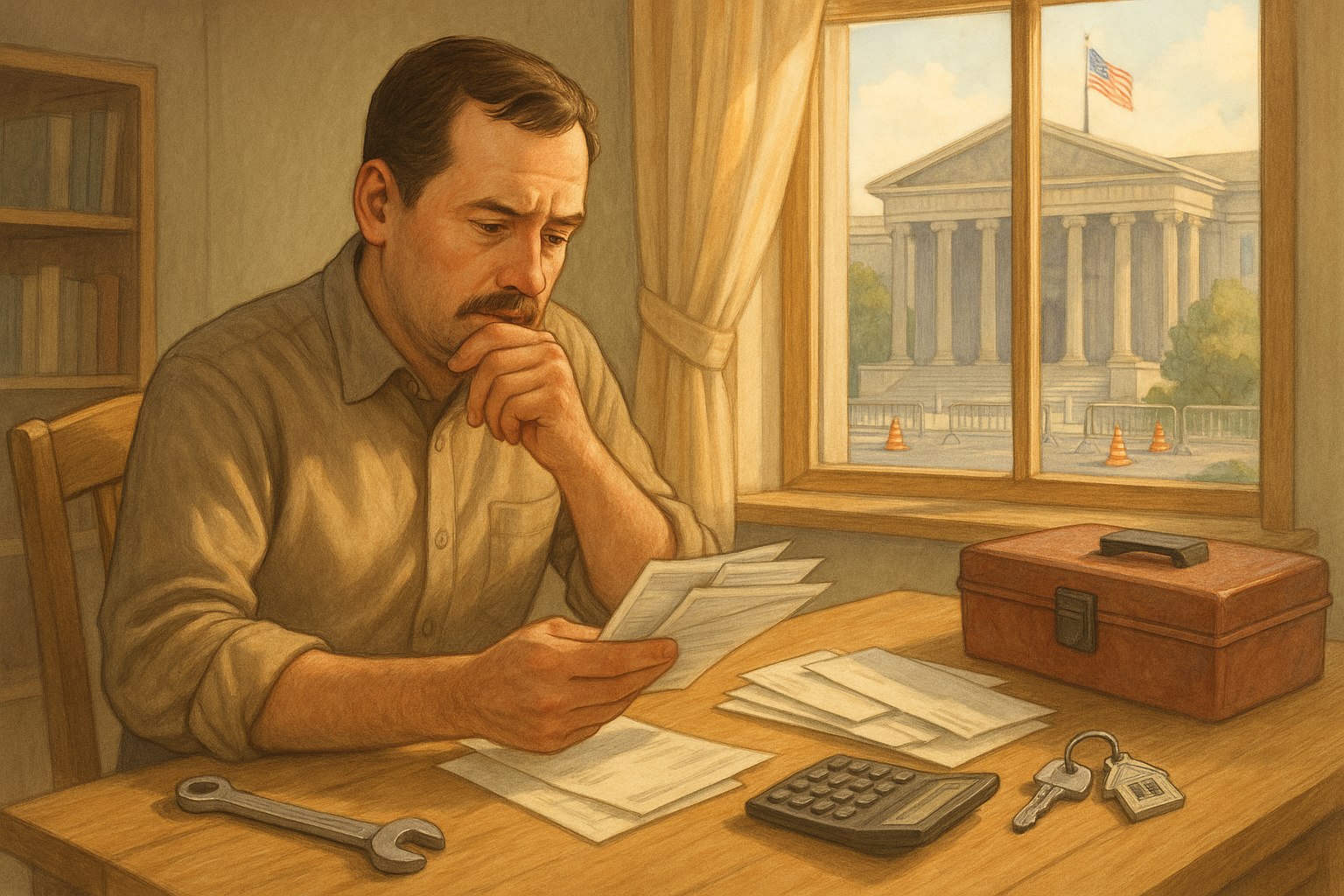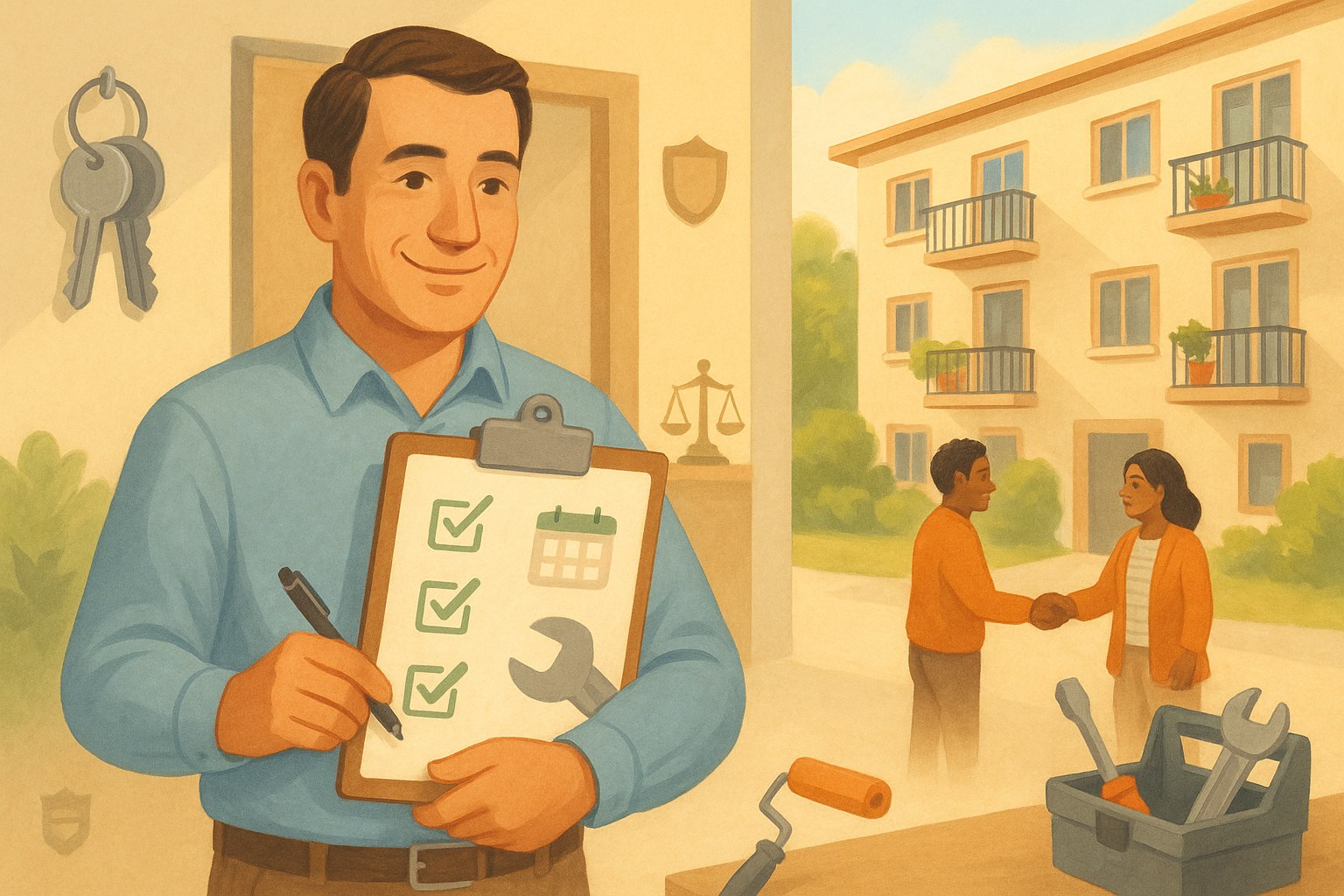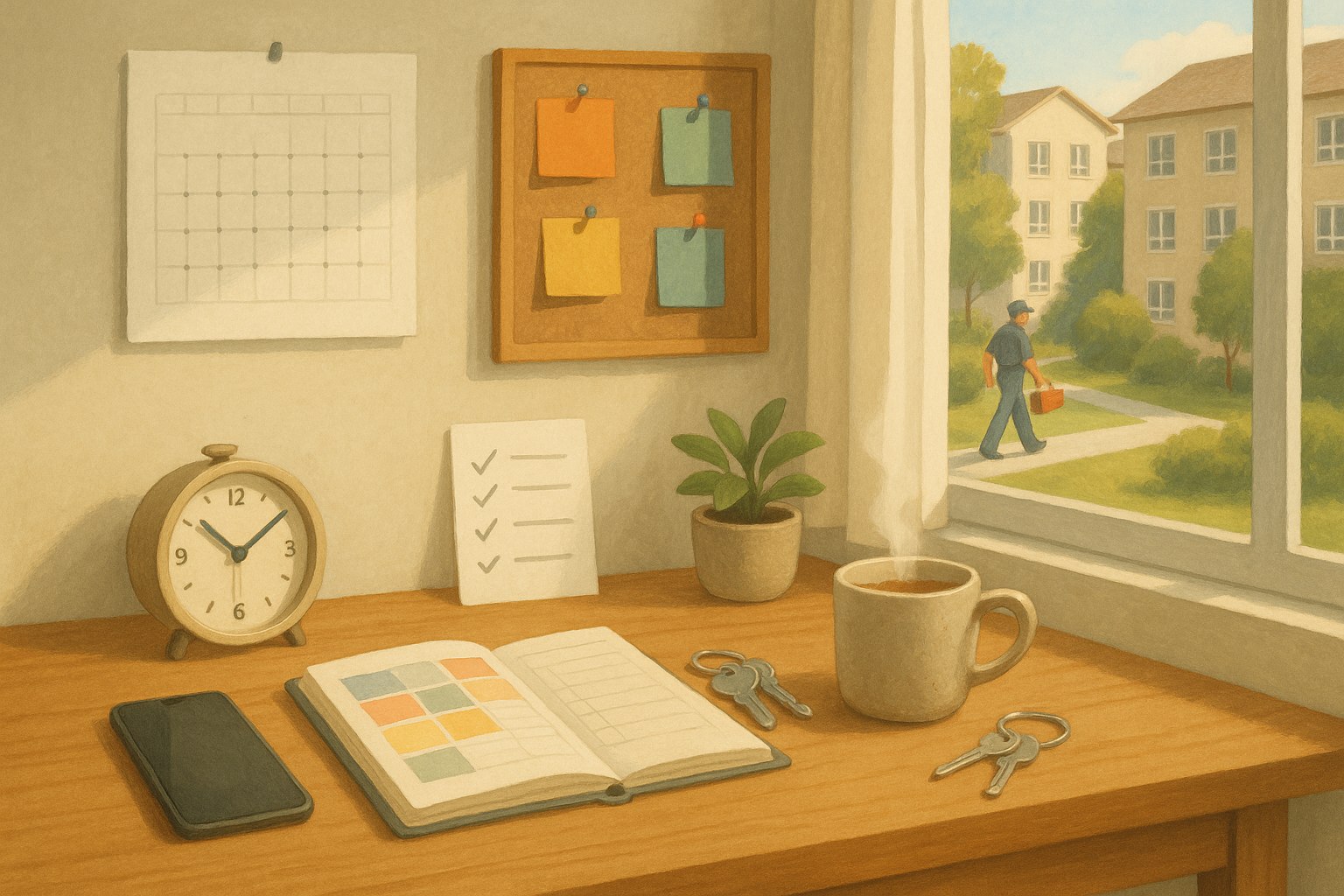A biyearly maintenance schedule for busy landlords

- Create maintenance agreements with tenants.
- Find a way of working a rental maintenance schedule into your routine.
Related: 5 Ways to Save Money by Being Your Own Property Manager
The first alternative is a great idea if you have responsible, long-term renters. But it might not be such a good one if you have a high turnaround rate or unreliable renters.
If you find the buck stopping at your desk, and your lifestyle won’t accommodate a monthly maintenance schedule, don’t despair. You should be able to take care of most major maintenance issues with biyearly visits, preferably in mid- to late-fall and mid-spring.
Fall maintenance
When you visit your rental property in the fall, your goal is to get it ready for winter. Make sure the heating system is in good working order, and inspect the structure for any problems that could be exacerbated in cold and snowy weather.
1. Service the central air system
Fall is the best time to clean and/or replace all the air return filters as well as the filters around the heating unit itself. If the property has a wood stove or fireplace, it’s a good idea to get the chimney swept once a year. This keeps the fires burning brightly and prevents sparks from causing fires in places you don’t want them.
Related: Who’s Responsible for Furnace and HVAC Maintenance?
2. Clean the gutters
Prevent ice dams and icicles by clearing leaves and debris from the gutters. It’s a messy and slightly dangerous job, so you may want to hire a handyman to do this for you.
3. Winterize the garden
Shut down the sprinkler system and then drain it to prevent burst pipes. Mulch vulnerable plants to protect them from frost. You can make great mulch material by raking leaves onto the lawn, mowing the grass, and collecting the cuttings.
4. Check weatherstripping and patch holes
Replace worn weatherstripping on doors and windows, and check around the foundation for cracks and holes. Patch the holes with caulk. If they look inviting for rodents, cover them with galvanized flashing so the renters don’t have a winter pest problem.
5. Do a safety inspection
- Look for rotted wood, lifting or sinking concrete pads, or anything else that could be a slipping hazard when covered with snow or ice.
- Check handrails for stability.
- Check outdoor outlets and light fixtures to make sure they work and that they are waterproof.
Related: Top 10 fall maintenance tips for landlords and property managers
Spring maintenance
Spring maintenance is mostly about troubleshooting damage caused by ice, snow, and freezing temperatures. Because the ground has thawed and the sun is out, it’s also the best time to make improvements that enhance the appearance and habitability of the property.
1. Maintain Drainage
Clear blocked downspouts and gutters, and repair leaks. Look for standing water in the yard or driveway, and improve drainage so puddles don’t turn into floodwaters during summer rainstorms.
2. Look for plumbing leaks and repair them
All pipes are vulnerable to freezing in the winter but especially exterior pipes that are partially or completely exposed. Turn on the water to full pressure, and check all the joints for sweating or active leaks.
3. Stabilize fences, decks, and handrails
Exterior wooden structures take a beating during the winter. Replace rotted wood, and tighten bolts and nuts to keep them serviceable throughout the summer.
4. Power wash
Clean dirty walkways, decks, fences, and sidings to keep them mold-free and looking their best.
5. Test the smoke alarms
Press the test button on each smoke alarm to be sure the alarm sounds. Check the dates on the batteries and replace any that have been in place longer than 10 years.
6. Seal cracks and holes
You did this in the fall, but you should also do it in the spring. Rodent and insect activity are highest in the summer months, and sealing them out is the best way to prevent an infestation.
7. Test the cooling system
If your rental has an air conditioner, make sure that it comes on and blows cold air.
Adding pool and septic upkeep
Some maintenance tasks are property-specific. For example, not every property has a pool or septic system, but if yours does, you need to regularly maintain them.
For pools
Closing a pool in the winter and opening it in the spring are two important jobs. Most landlords contract with a pool service for regular pool upkeep.
Related: A Landlord’s Guide to Swimming Pool Maintenance and Liability
For septic systems
Check the level of the tank in the spring, and pump it if necessary. This is something you should do every three to five years. Don’t let your tenants off the hook when it comes to septic maintenance, however. The way they use the plumbing affects the health of the tank and drain field. Give your tenants clear guidelines concerning septic use when they move in. It goes without saying that tenants should also do their part to dispose of trash and maintain sanitary, mold-free conditions.
Related: How to Educate Your Tenants about Using a Septic System







